#Ethiopian Contemporary Art
Explore tagged Tumblr posts
Text
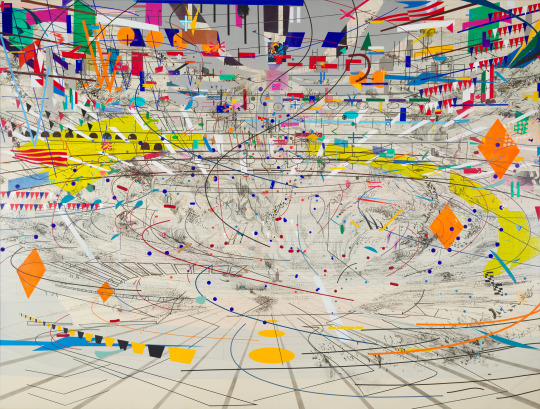
Julie Mehretu, Stadia II, 2004, ink and acrylic on canvas, 272.73 x 355.92cm
4K notes
·
View notes
Text

Single Painting #17, Hana Yilma Godine, 2023
Oil and fabric on canvas 70 x 50 in. (177.8 x 127 cm)
#art#painting#hana yilma godine#contemporary art#women artists#black artists#female artists#african art#artists of color#21st century#21st century art#2020s#oil#fabric#ethiopian
39 notes
·
View notes
Text
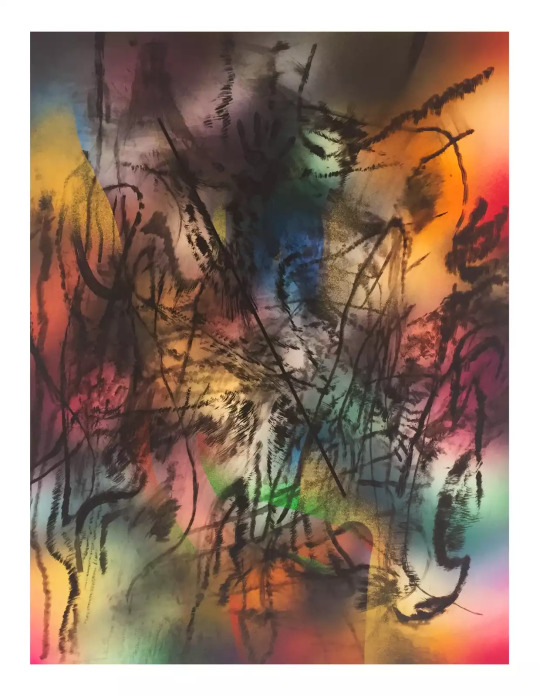
bare by julie mehret, 2021, giclée print on hahnemüle paper, 20 × 15 inches
21 notes
·
View notes
Text


Elias Sime. Tightrope : Behind the Processor # 5, 2023. w/ detail
reclaimed electrical wire + components
#abstract sculpture#assemblage#hand weaving#contemporary african art#recycled materials#ethiopian artist
14 notes
·
View notes
Photo
I dug this, hence the rare re-blog from me.

Getahun Assefa Balcha (Ethiopian, 1967), Women Fishing, 2019. Acrylic on canvas, 199 x 100 cm.
#Getahun Assefa Balcha#Ethiopian Artists#women fishing#contemporary art#acrylic on canvas#contemporary paintings
11K notes
·
View notes
Text
Julie Mehretu's Masterpiece Breaks Records at Sotheby's
Julie Mehretu’s Masterpiece, Walkers With the Dawn and Morning sets a new record at auction. Image: Artist/Sotheby’s Walkers With the Dawn and Morning, Julie Mehretu’s masterpiece record sale highlights the growing interest in contemporary African art. BY KAZEEM ADELEKE, ARTCENTRON NEW YORK, NY-In a remarkable triumph, Ethiopian-born artist Julie Mehretu has once again etched her name into the…

View On WordPress
#Abstract Painting#Art#Art Market#Artist#Auctions#Contemporary African Art#Ethiopian Artist#Julie Mehretu#PAINTING#Record Sale
1 note
·
View note
Note
Have you ever read Africana Andromeda: Contemporary Painting and the Classical Black Figure by Kimathi Donkor? I feel like it might be up your alley, he's a Black contemporary artist commenting on the gradual "building" of "white Andromeda" as a concept throughout eras and the questionable systematic absence of her Ethiopian identity despite Ovid's Heroides being right there.
He also makes an argument reimagining her with focus on her African identity. It's available online on arts . ac . uk if you google the name + title (the third link on google I think) but it was also published in Classicisms in the Black Atlantic. An interesting art study you might enjoy 👀
P. S. He also depicted Andromeda at least twice himself and I don't want to spoil one of them but this one is titled The Rescue of Andromeda and can be viewed on the artist's website (kimathidonkor . net)

Omg thanks!
7 notes
·
View notes
Text

Julie Mehretu (born November 28, 1970) is an Ethiopian American contemporary visual artist, known for her multi-layered paintings of abstracted landscapes on a large scale. Her paintings, drawings, and prints depict the cumulative effects of urban sociopolitical changes.
In 2023, she was one of two women artists whose work was among the top ten in contemporary auction sale price. via Wikipedia

Ethiopian artist Julie Mehretu breaks African art-world record again (2023)
4 notes
·
View notes
Photo

Jean-Léon Gérôme (French, 1824 - 1904) Femmes au bain, 19th century - Slavery gave rise to the figure of the Odalisque, that is the beautiful, white slave girl, a figure of quintessential beauty.
In the late 18th century Johann Friedrich Blumenbach, the father of physical anthropology, the father of scientific anthropology, an 18th century German scholar, assigned the name Caucasian to the people living in western Europe, to the River Ob in Russia to northern Africa, and to India. He called the people in Europe, over to India, well into Russia and North Africa, Caucasians because they were the most beautiful in the world. Blumenbach enjoyed a scholarly reputation that gave his designation enormous heft and it got picked up very quickly.
Immanuel Kant stated that the Caucasians, the Georgians, the Circassians, sell their children, particularly their girls to the Turks, the Arabs, and the Persians, for reasons of eugenics, that is, to beautify the race. The idea of the beauty of Caucasians is linked with the idea of the slavery of Caucasians. Before the Atlantic slave trade to the western hemisphere shaped our ideas about what slave trades are all about, there was slave trade from this part of the world, that goes back to before the reaches of time.
Herodotus writing in the fifth century BC, writing about the enumeration of taxes and tributes paid to the Persian kingdom, collected from the lands it had controlled and the lands even far away in the distance. He said that the voluntary contribution was taken from the Colchians, that is the Georgians, and the neighboring tribes between them and the Caucasus, and it consisted of and still consists of (that is in the 5th century BC) every fourth year 100 boys and 100 girls. This was before Herodotus could even see the beginnings of it. Herodotus also mentioned the tribute from the southern most part of the edges of the Persian world and that was for the people called Ethiopians, what they owed was gold and ivory, people were not mentioned. So, the Black Sea Slave trade was the slave trade in the western world until the 15th century when the Ottomans captured Constantinople and cut the Black Sea off from western Europe. At that point, 15th century, the Atlantic slave trade becomes the western slave trade.
Daniel Edward Clarke, our Cambridge don, also located Circassian beauty, in the enslaved. “The Cicassians frequently sell their children to strangers, particularly to Persians and Turkish Seraglios.” He speaks of one particular Circassian female who was 14, who was conscious of her great beauty, who feared her parents would sell her according to the custom of the country. The beautiful young slave girl became a figure, and she had a name; Odalisque. She combines the powerful notions of beauty, sex, and slavery. Ingres, Jerome, Powers and Matisse specialized in Odalisque paintings.
The figure of the Odalisque faded from memory as the Black Sea slave trade ended in the late 19th century, and the Atlantic slave trade overshadowed that from the Black Sea. Today, the word slavery invariably leads to people of African descent. Americans seldom associate the word Odalisque with with slavery in the Americas. Today many American painters use Odalisque figures, Michalene Thomas for instance who has done a series of what she calls American Odalisque. But the phrase and the figure of the Odalisque has lost its association with slavery. And now in American art history and in contemporary American art, Odalisque simply refers to a beautiful woman, usually unclothed.
If you want to learn more, listen to professor Nell Painter of Princeton University in the YT lecture “Why White People are Called Caucasian.”
#Jean-Léon Gérôme#Gerome#art#french art#france#french#Femmes au bain#white slaves#black sea slave trade#europe#european#europa#fine arts#world history#caucasian
48 notes
·
View notes
Photo








Dawit Abebe (b 1978, Ethiopian), graduated from the Alle School of Fine Art and Design, part of Addis Ababa University, in 2001 with a diploma in painting, sculpture, graphics, photography and industrial design.
His work addresses contemporary concerns about the environment, such as high-tech urbanisation and human idea of progress. In 2001, he founded the Habesha Art Studio in his native Ethiopia, where he continues to be a full-time artist-in-residence.
https://www.dawitabebe.com
38 notes
·
View notes
Text
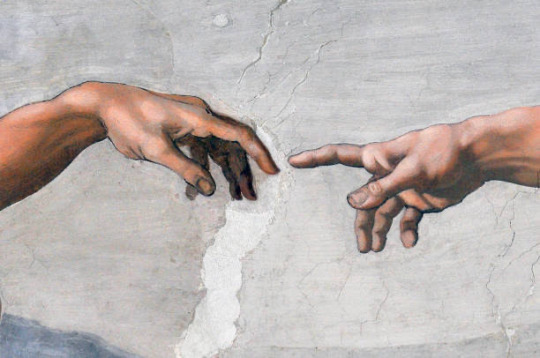
From the age of medieval art period to the age of Impressionism, Surrealism, cubism, and Renaissance the world of art has seen its fair share of influential movements.
Art something that’s very subjective yet is able to describe someone another’s feelings without using even a single word. While the style of art has changed over the years but the overall objective has stayed the same.
Producing quality and thought-provoking work, the list of these artists are making waves in the contemporary art world.
Here are the 5 artists that have made huge impact in the world of contemporary art
1. Françoise Pétrovitch
With drawing at the heart of her practice, Pétrovitch also uses a range of other mediums including ceramics, glass, painting, and video. Her works often represent ambiguous beings that appear to be consumed by their thoughts.
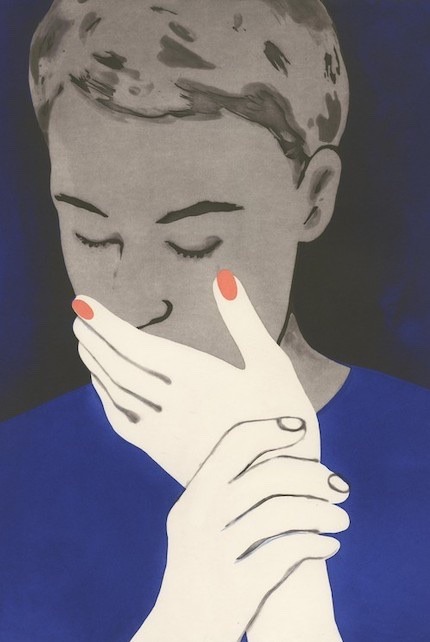
2. Tiemar Tegene
Ethiopian artist Tiemar Tegene employs varying techniques in her practice, with a focus on etching. Her work explores the natural and constructed boundaries that exist within us all, specifically in relation to power and control.
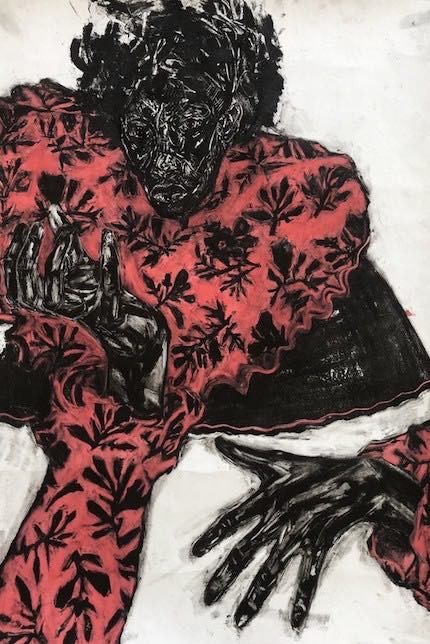
3. Okuda
Beneath the colorful surface of Spanish artist Okuda‘s works lies a deeper meaning. Switching between digital art and traditional methods like embroidery, Okuda explores the meaning of life and the conflicts that exist in humanity.

4. Maria Esmar
Abstract painter Maria Esmar‘s expressive canvases brighten up any interior space with their colorful and harmonious compositions. The artist’s impressive output has drawn attention to her work
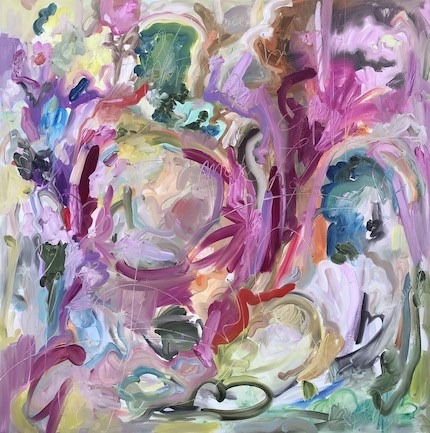
By,
Ritika Rajpal
10 notes
·
View notes
Photo

Alexander "Skunder" Boghossian (Ethiopian, 1937 -2003)
Untitled, 1966
oil on canvas, 60 x 48.5cm (23 5/8 x 19 1/8in)
© Bonhams, MODERN AND CONTEMPORARY AFRICAN ART
#skunder boghossian#ethiopian art#alexander boghossian#african art#alexander skunder boghossian#art#mu art#mu#bonhams#20 art#20 notes
27 notes
·
View notes
Photo

Contemporary Portraiture: 1-54 African Art Fair
Atong Atem
Science fiction writer Octavia E. Butler was a visionary. According to BBC, the author “envisaged an alternate future that foresaw many aspects of life today, from big pharma to Trumpism.” Butler is amongst Atong Atem’s (b. 1994) key influences, alongside the likes of acclaimed Malian studio photographers Malick Sidibé and Seydou Keïta. Their works, like Butler’s, are synonymous with social change and modernity. Atem is an Ethiopian-born, South Sudanese artist who lives and works in Melbourne. She uses the lens to explore concepts of home, tapping into migrant narratives and postcolonial experiences.
#atong atem#artist#nail art#contemporary portraiture#1-54 african art fair#octavia e butler#science fiction writer#africa#malick sidibe#seydou keita#social change#modernity#malian studio photographers#melbourne
17 notes
·
View notes
Text

THE GREEKS AND ROMANS ON EGYPTIANS
“To the Greek and Latin writers contemporary with the ancient Egyptians the latter’s physical classification posed no problems: the Egyptians were negroes, thick-lipped, kinky-haired and thin-legged” (Diop, 1980, p. 37).
“Herodotus, ‘the father of history,’ — 480 (?) to — 425 [BCE]. With regard to the origins of the Colchians he writes: ‘It is in fact manifest that the Colchidians are Egyptian by race . . . several Egyptians told me that in their opinion the Colchidians were descended from soldiers of Sesostris I. I had conjectured as much myself from two pointers, firstly because they have black skins and kinky hair (to tell the truth this proves nothing for other peoples have them too) and secondly and more reliably for the reason that alone among mankind the Egyptians and the Ethiopians have practiced circumcision since time immemorial. The Phoenicians and Syrians of Palestine themselves admit that they learnt the practice from the Egyptians while the Syrians in the river Thermodon and Pathenios region and their neighbors the Macrons say they learnt it recently from the Colchidians’” (Diop, 1980, p. 36-37).
“Herodotus reverts several times to the negroid character of the Egyptians and each time uses it as a fact of observation to argue more or less complex theses. Thus to prove that the Greek oracle at Dodona in Epirus was of Egyptian origin, one of his arguments is the following: ‘ . . . and when they add that the dove was black they give us to understand that the woman was Egyptian’” (Diop, 1980, p. 37).
Aristotle (389 BCE - 332 BCE) says, “‘Those who are too black are cowards, like for instance, the Egyptians and Ethiopians. But those who are excessively white are also cowards as we can see from the example of women, the complexion of courage is between the two’” (Diop, 1980, p. 37).
Lucian (Greek writer, 125 - 190 BCE) describing a young Egyptian states, “‘This boy is not merely black; he has thick lips’” (Diop, 1980, p. 38).
Quote from Aeschylus (when describing the Egyptians): "I can see the crew with their black limbs and white tunics."
“According to Diodorous [of Sicily, 63 BCE to 14 BCE, Greek historian], it was probably Ethiopia which colonized Egypt (in the Athenian sense of the term, signifying that, with overpopulation, a proportion of the people emigrate to new territory)” (Diop, 1980, p. 38).
Diodorus states, “‘The Ethiopians say that the Egyptians are one of their colonies, which led into Egypt by Osiris. They claim that at the beginning of the world Egypt was simply a sea but that the Nile, carrying down vast quantities of loam from Ethiopia in its flood waters, finally filled it in and made it in part of the continent . . . They are that the Egyptians have received from them, as from authors and their ancestors, the greater part of their laws” (Diop, 1980, p. 38 - 39).
“There are about nine centuries between the birth of Aeschylus and Herodotus and the death of Ammianus Marcellinus, nine centuries during which the Egyptians, amid a sea of white races, steadily crossbred” (Diop, 1980, p. 39).
“It is remarkable that, despite its intensity, all this crossbreeding should not have succeeded in upsetting the racial constants. Indeed Ammianus Marcellinus [Latin historian, 330 - 395 CE] writes “‘ . . . the men of Egypt are mostly brown or black with a skinny and desiccated look’” (Diop, 1980, p. 39).
The great French philosopher Constantine de Volney on a visit to Egypt in 1787 would put it beautifully "Just think," de Volney declared incredulously, "that this race of Black men, today our slave and the object of our scorn, is the very race to which we owe our arts, sciences, and even the use of speech! Just imagine, finally, that it is in the midst of people who call themselves the greatest friends of liberty and humanity that one has approved the most barbarous slavery, and questioned whether Black men have the same kind of intelligence as whites!
Many contributions ounce thought to be attributed to a fairer skinned Egyptian peoples have been proven to be black African in origin.The oldest form of advanced mathematics showing the earliest use of egyptian multiplication is the 25,000 year old Ishango bone. The earliest form of advanced astronomy is the megalithic structures of Nabta Playa located in the Nubian desert.The oldest mummy ever found was Lucy dating back some 4 million years ago.
Luckily we live in a world free of the awful racism that infected 18th and 19th century historians looking to distort ,destroy and utterly deny any evidence of African peoples intelligence and competence. It is now commonly thought ,as the greeks knew long ago that ancient Egypt began essentially as a northern extension of Nubian culture and people.
7 notes
·
View notes
Text







~ "Castellani Jewelled pendant brooch with enamelled gold and a large sapphire intaglio of a battle scene. Circa 1887-1888. Enamelled gold, set with rubies, a pearl, a bevelled diamond and a large sapphire intaglio of a battle scene (a cast of the intaglio is also displayed); hung with pearls. Applied plaque with the Castellani monogram. Height: 8.9cm; Width: 5.0cm; Depth: 1.8cm. This nineteenth-century jewel draws its inspiration from the pendants made in Germany in the early 1700s, but it is unusual amongst Renaissance Revival pieces for its commemoration of an event from contemporary Italian foreign policy. The large central sapphire is finely engraved with a representation of the battle of Dogali, Ethiopia. The jewel was designed and made by the great Italian firm of Castellani, noted for their interest in historical jewellery and their revival of classical and Renaissance styles. On the 26th of January 1887, an Italian invasion force was defeated by the Ethiopian army at Dogali, leading to the death of 500 Italian soldiers. This was a traumatic defeat for the newly unified Italy, soon commemorated with a monument near the renamed Piazza dei Cinquecento in Rome. Passionate newspaper reports served to inflame opinion against Ethiopia and united Italians in a feeling of wounded pride and indignation. The battle scene engraved with minute detail on the sapphire was taken from a print published in Illustrazione italiana, along with an account of the battle. Castellani’s nationalist feeling was also demonstrated by the creation of tricolour brooches after the unification of Italy. The sapphire must have been engraved very soon after the event, and the completed jewel is recorded in Castellani's studio inventory in June 1888 - allowing a more precise dating than is usually possible with Castellani's work. Three other pendants in this form are known, but these have a double flower in place of the engraved gem. Castellani’s Renaissance style jewellery did not meet the same immediate praise as the classically inspired pieces but the firm’s research into enamelling was an important factor in the renewal of the art." ~
1 note
·
View note
Text
Reblogging again because I see some really great points in the tags:
European endorsement of Aliyah at this time was absolutely motivated by anti-semitism and the removal of Jewish people from Europe. Even to this day we see the remnants of this Christian Zionism in far-right movements in the US, for example, with people like Richard Spencer praising Israel for its admirable qualities as an entho-state while simultaneously holding views in line with the world Jewish conspiracy. It is not coincidence that we see neo-Nazi circles in the West backing Zionism and Jewish migration to Israel.
Aside from that, I want to clarify my last point. The tactic often used by colonial states of attaching Indigenous culture to settler national identity is also seen in Israeli society with the revitalization of ancient Canaanite and Hebrew culture (as well as the appropriation of Palestinian culture). Along with this came the historical and contemporary suppression of Jewish culture within Israel.
Historically, Yiddish has been censored by the Israeli government. Yiddish art and publications were heavily discouraged and lots of Ashkenazi Jews immigrating to Israel Hebraized their last names and continue to do so to this day. Yiddish theater was taxed 10% while Hebrew theater was not.
Israel is also heavily racist towards Black Jews. Ethiopian Jews have been targeted by the Israeli government for sterilization. Ethiopian women have been coerced by doctors to take Depo-Provera, a long-lasting contraceptive, making up 57% of those who have received the drug in Israel. In some cases, they were told they could not immigrate unless they took the drug. The birthrate of Ethiopian-Israelis has dropped by 20% because of this. Blood donation by Ethiopian-Israelis is banned. There have been instances of Ethiopian-Israeli students being forced to learn in complete isolation from other students, as well as the beginning of Ethiopian-Israeli students' education being delayed by months by the government. Beyond this, Igbo Jews from Nigeria were not permitted to make Aliyah.
And lastly, In the '40s and '50s, aprox. 1,000 to 5,000 Yemeni-Israeli children disappeared. 1 in 8 of Yemeni-Israeli children were affected (Tunisian, Morrocan, Balkan and other Arab-Jewish groups were also targeted). There is large speculation that many of these kids were abducted by the government specifically to be adopted by white, Ashkenazi Jews with more and more elderly Mizrahim coming out to this day about their experience being adopted.
I'm sure there are many other instances like these that I'm just not aware of. However, it becomes obvious that the creation of an Israeli state was for the purpose of continuing Western imperialism in SWANA while covertly expelling Jewish people from increasingly nationalist states in Europe in the 19th-20th centuries, not to cultivate Jewish security or culture.
People do not realize that when we say Israel is a settler-colonial state, we mean it was literally devised in junction with European imperialism around the turn of the century.
Political Zionism was founded by Theodore Herzl. Originally, Zionists were not specifically interested in the land of Palestine as a colonial project. In fact, Herzl was debating making Argentina the focus of mass Zionist migration, which is quite ironic considering Argentina's colonial and Aryanist past. British-controlled Uganda was also offered as a possibility by Joseph Chamberlain, a Conservative imperialist.
To encourage mass Jewish migration to Palestine, he worked with the British, who had recently drove the Ottoman Empire out of the Levant, and now boasted political dominance in the region, thanks to the Sykes–Picot Agreement between the UK, France, Italy, and Russia which covertly authorized British influence in Palestine, which had become a target of colonial expansion. He specifically wished to collaborate with Cecil Rhodes, a British imperialist who played a lead role in colonizing Zimbabwe and Zambia, and later took inspiration from his time spent extracting wealth from Africa as the founder of mining conglomerate the British South Africa Company.
Herzl’s personal goals for Zionism were colonial. He said in a letter to Rhodes:
“You are being invited to help make history. It doesn’t involve Africa, but a piece of Asia Minor; not Englishmen but Jews […] How, then, do I happen to turn to you since this is an out-of-the-way matter for you? How indeed? Because it is something colonial […] I […] have examined this plan and found it correct and practicable. It is a plan full of culture, excellent for the group of people for whom it is directly designed, and quite good for England, for Greater Britain [...]”
At that time, Palestine was predominately populated with Arab Muslims and Christians, as well as Arab Jews (Old Yishuv) and Druze. Jews made up around 6% of the population. The Ottoman government specifically released a manifesto at the start of Zionist migration condemning the colonization, stating:
“[Jews] among us […] who have been living in our province since before the war; they are as we are, and their loyalties are our own.”
The Balfour Declaration of 1917 on behalf of parliament, officially established the British Mandate of Palestine, sowing the seeds for the modern state of Israel, by means of the UK's ongoing occupation of the region.
Zionism was never about promoting Jewish culture or safety; it has always been tied up in Western (settler-)colonial expansion. !من النهر إلى البحر
13K notes
·
View notes